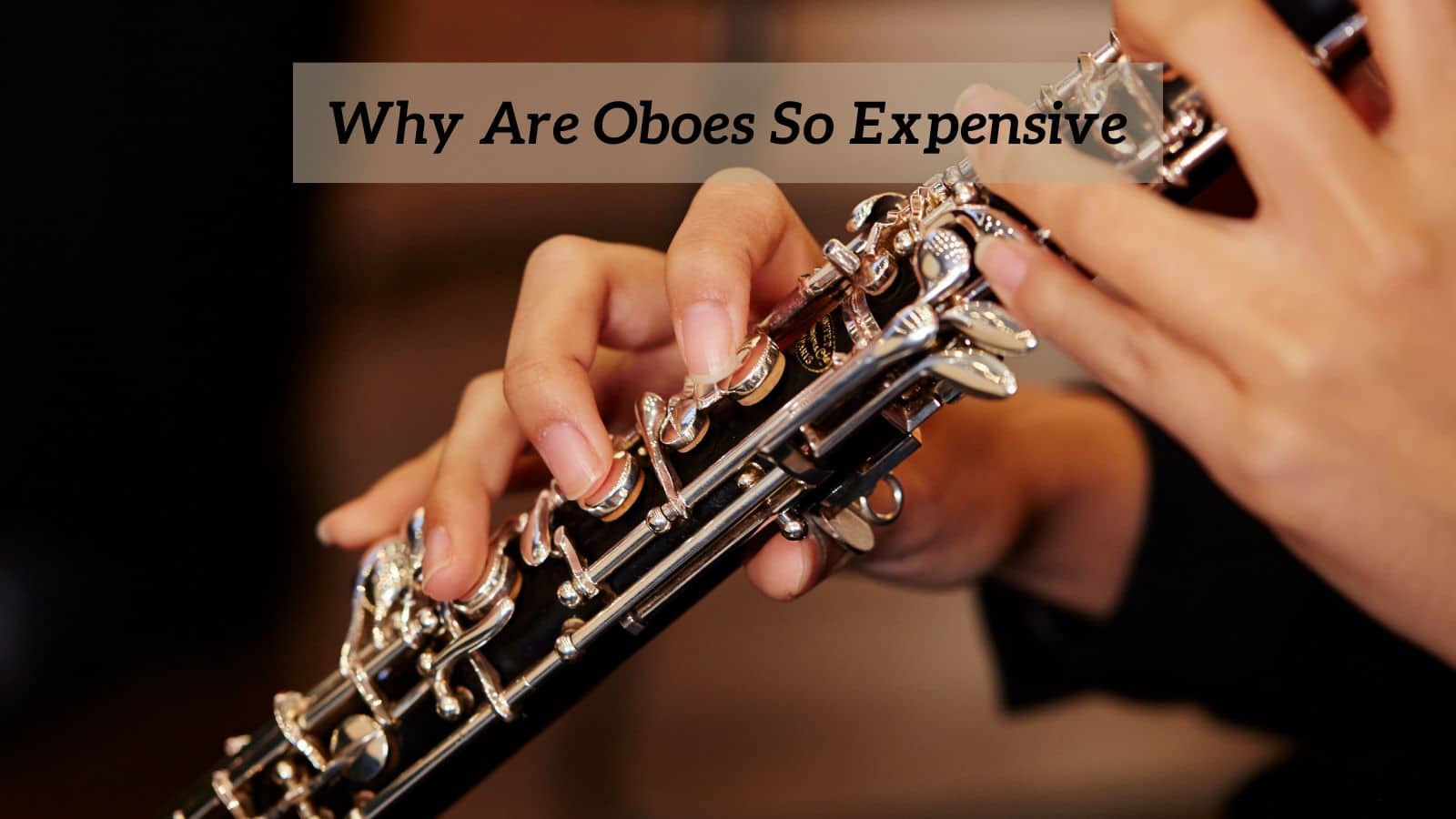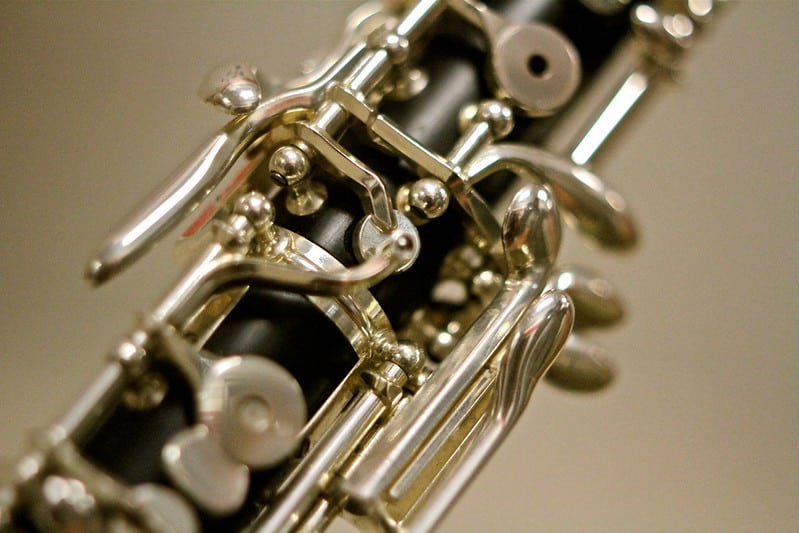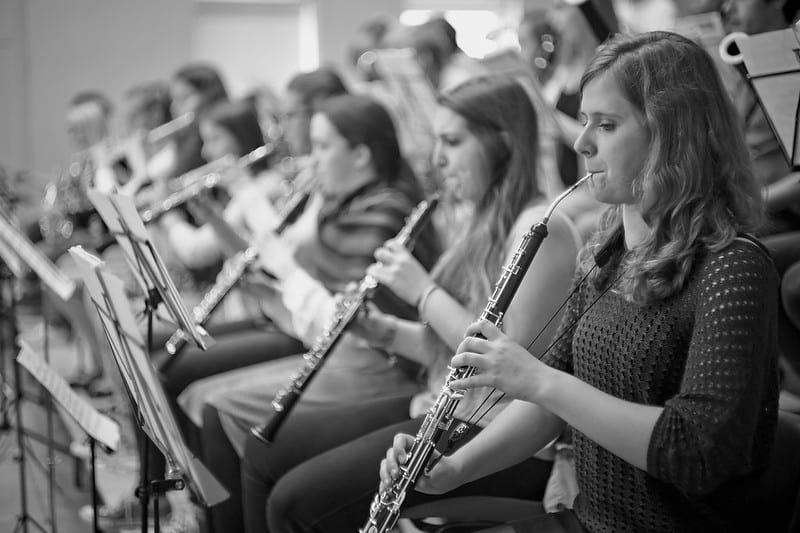
Popularity can often determine the cost of a musical instrument. Take for example the humble electric guitar. Nearly everyone I’ve ever met has at one time or another wanted to play the electric guitar, often with grand aspirations to be the next Hendrix.
The sheer quantity of people wanting to play electric guitar means that the cost of an instrument is relatively low. The oboe, I think it’s fair to say, does not enjoy the same levels of demand as the electric guitar. Less demand, greater price.
Why Are Oboes So Expensive?
This is not the full picture of course. Many other factors that we’ll explore now contribute to the expense of any given instrument. Guitars can be manufactured using relatively cheap materials and the complexity of the instrument is not comparable to the oboe.
Oboes are made from a range of African hardwoods, the most popular being granadilla. Consider that it takes around two hundred years for an African Blackwood tree (Dalbergia melanoxylon) to reach sufficient maturity for it to be useable as wood for an oboe.
Other woods that can in themselves be very expensive can include ebony, rosewood and cocobolo. In a similar way to the clarinet, beginner instruments are made from a toughened plastic that reduces the cost significantly.
The entire manufacturing process for an oboe is both complex and time-consuming.
Once the selected wood has arrived, most likely from Africa or South America, the billets of blocks of wood are then machined into the three separate sections of the instrument taking care to match one billet to the next.
These days much of the machining is undertaken by a computer-controlled drilling machine that has been precisely programmed with the correct placements for holes and bore.
It is worth remembering that the thickness of the walls of an oboe is almost twice that of the clarinet. This is because the bore inside an oboe is considerably narrower. It adds expense to the instrument.
The holes that are drilled into the body of the instrument are not only tone holes or holes over which the player places their fingers, but also the holes necessary for the posts that hold the keywork in place.
These can be as tiny as 0.5mm across and are frequently drilled by hand. Howarth a well-respected oboe manufacturer, estimates that somewhere between 20-60 hours are required to hand-make the keywork for each instrument.
These can contain up to 200 separate components and all keywork is hand-fitted to each oboe. Once the keywork is in place each oboe is tested by an expert to ensure it is correctly set up.
This is not the end of the process as once the keywork has passed the standard tests it is then removed for plating and polishing.
Each key must be perfectly smooth, then it receives a layer of silver plating that as you might expect alters the dimensions of the keys. Every key has the excess silver removed and is again smoothed and polished to very exact measurements.
Soon after, the oboe is at the stage where it can be properly and finally assembled. Keys are checked for alignment and placing. Glue is applied to pads and corks that cushion keywork and seal the three joints.
Further testing then takes place to check whether the pads are properly seated, the keywork fitted perfectly without noise or hindrance and the joints are airtight.
According to various manufacturers’ websites, the total hours worked in the manufacturing of a single oboe is approximately 80 hours and usually involves up to six expert craftsmen.
From this point alone, it is not overly difficult to understand why the cost of professional instruments can become great.
Like many instruments, the oboe range encompasses the beginner student right up to the professional player. On the less expensive end then the student models are comparable to clarinets but still more pricey.
That said in comparison to a student bassoon or a violin, viola or cello, they are quite reasonable. The professional oboist is thought to change instruments roughly every five to six years.
This means the second-hand market is reasonably buoyant. Always take professional advice though before buying an instrument regardless of price.
Many manufacturers of professional oboes presently exist. There are too many to list here but the ones that regularly top the oboe charts include the following: Howarth, Buffet Crampon, Loreé, Ludwig Frank, Marigaux, Mönnig and Rigoutat.
When it comes to deciding which of these instruments you might wish to purchase it is often a matter of the sound you like and the feel of the instrument. It is an extremely personal choice and one that can take quite a time to be sure.
Let’s take a snapshot of the costs involved when thinking about a professional oboe. Remember, each of these instruments is manufactured to an incredibly high standard and will probably produce a beautiful sound alongside ease of playing.
If you glance towards the lower end of the price range then the Loreé Standard Model carries a price tag of around £6245.00. At the other end of this range is the Loreé Royal 125.
This fine instrument is priced at around £8425.00. Stretching upwards, the top-end oboes attract these kinds of prices; Marigaux Model M2, £10965.00 and the Howarth LXV, £9695.00.
Interestingly, the Ludwig Frank Professional Oboe (Model 11), is listed as Price On Application, inferring that the cost could raise the price bar even further.
The beautiful range of professional Buffet oboes sits comfortably at this price margin with the Orfeo coming in at around $10,000.00.
Alongside the precision manufacturing techniques required to produce top-quality oboes, the scarcity of wood and the popularity of the instrument, the oboe is a costly instrument.
It is also one of the most beautiful, sonorous, even mournful sounds to emanate from the woodwind family. In the hands of a skilful player, the oboe sings with a unique voice that fluently covers the full range of human emotions.
When compared to a flute or clarinet, the oboe can seem expensive but then again look at the cost of a professional violin, piano, or cello. These instruments can run into millions of pounds or dollars. Perhaps on balance, the humble oboe is not so expensive.


